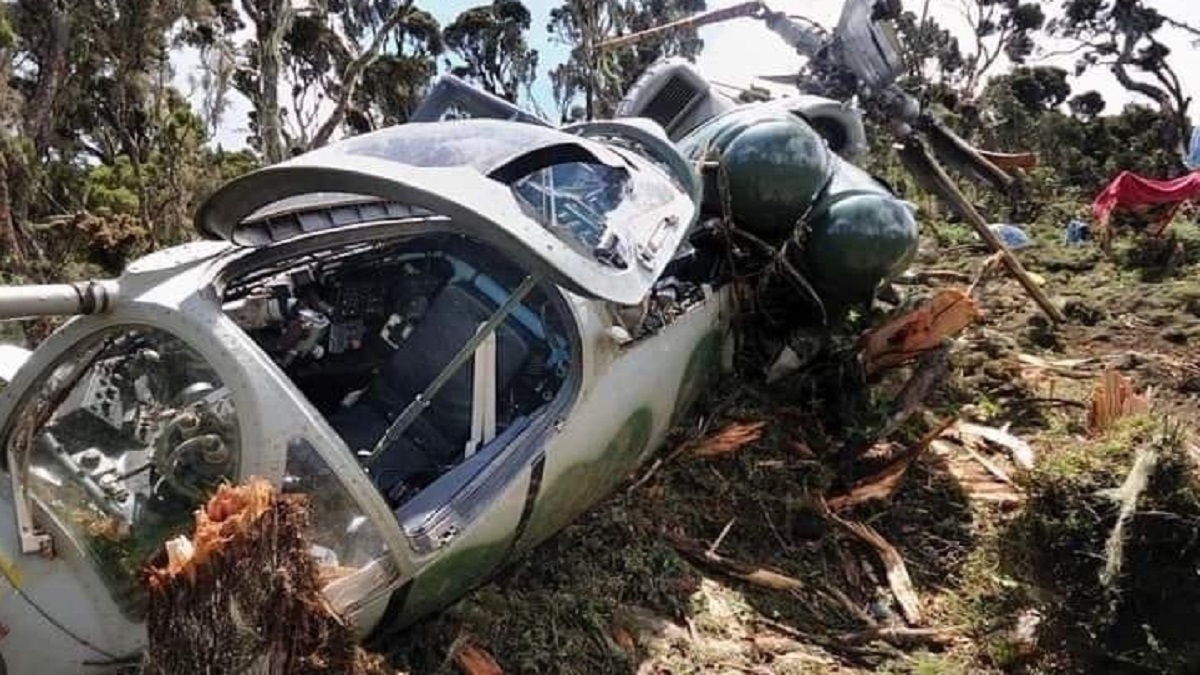Introduction
In a devastating incident that has shaken Nepal, a helicopter crash near the mountains has resulted in the loss of six lives. This tragic event has sent shockwaves through the nation, raising questions about aviation safety and the risks involved in mountainous regions. In this article, we delve into the details of the crash, explore the possible causes, and discuss the aftermath of this unfortunate incident.
Table of Contents
| SN | Headings |
|---|---|
| 1 | The Ill-Fated Helicopter Journey |
| 2 | Investigating the Crash |
| 3 | Factors Contributing to the Accident |
| 4 | Challenges of Mountainous Flying |
| 5 | Implications for Aviation Safety |
| 6 | Supporting the Families of the Victims |
| 7 | Conclusion |
| 8 | FAQs |
1. The Ill-Fated Helicopter Journey
The ill-fated helicopter journey was intended to offer passengers a breathtaking view of Nepal's majestic mountains. Tragically, the flight ended in disaster, leaving six people dead and their families devastated. The incident has prompted an urgent investigation to uncover the sequence of events leading to the crash.
2. Investigating the Crash
A thorough investigation is underway to determine the cause of the helicopter crash. Aviation experts and authorities are examining the wreckage, analyzing flight data, and conducting interviews with witnesses and survivors. It is crucial to piece together the puzzle and find answers to prevent future accidents.
3. Factors Contributing to the Accident
While the investigation is ongoing, initial findings suggest that multiple factors may have contributed to the crash. Possible factors under scrutiny include weather conditions, pilot error, mechanical failures, and the challenging nature of flying in mountainous terrain. Understanding these factors is essential for implementing necessary safety measures.
4. Challenges of Mountainous Flying
Flying in mountainous regions presents unique challenges for pilots. Unpredictable weather patterns, strong winds, and limited landing options demand exceptional skill and experience. Pilots navigating through valleys and high-altitude areas require specialized training and a deep understanding of the complexities involved.
5. Implications for Aviation Safety
The helicopter crash in Nepal highlights the critical importance of aviation safety, especially in challenging environments. It serves as a reminder that continuous training, regular maintenance of aircraft, and adherence to safety protocols are paramount to prevent accidents. The incident calls for a comprehensive review of safety regulations and practices in mountainous flying.
6. Supporting the Families of the Victims
As the nation mourns the loss of lives, it is crucial to extend support to the families affected by this tragedy. Communities, organizations, and authorities must come together to provide emotional and financial assistance to help the families cope with the devastating consequences of the helicopter crash.
7. Conclusion
The helicopter crash in Nepal near the mountains has left a profound impact on the nation and serves as a tragic reminder of the risks involved in aviation, particularly in challenging terrain. It is imperative that lessons are learned from this incident to enhance safety measures, improve training protocols, and ensure that such accidents are minimized in the future.
8. FAQs
Q1: What caused the helicopter crash in Nepal?
A1: The investigation is still ongoing to determine the exact cause. Initial findings suggest that weather conditions, pilot error, and the challenging mountainous terrain may have played a role.
Q2: Are helicopter flights in mountainous regions risky?
A2: Flying in mountainous regions poses unique challenges and requires specialized skills. With proper training, adherence to safety protocols, and regular maintenance, risks can be minimized.
Q3: How can aviation authorities improve safety in mountainous flying?
A3: Enhancing training programs for pilots, conducting regular safety inspections, and updating safety regulations based on lessons learned from accidents are crucial steps.
Q4: What support is available for the families affected by the helicopter crash?
A4: Communities, organizations, and authorities are working together to provide emotional and financial support to the families impacted by the tragedy.
Q5: What can be done to prevent similar accidents in the future?
A5: Implementing comprehensive safety measures, enhancing pilot training programs, and conducting regular risk assessments can help prevent similar accidents and ensure the safety of air travel.
By analyzing the helicopter crash and addressing safety concerns, we can work towards a safer aviation industry and minimize the risks associated with flying in challenging environments.



.jpg)



.jpeg)



0 Comments